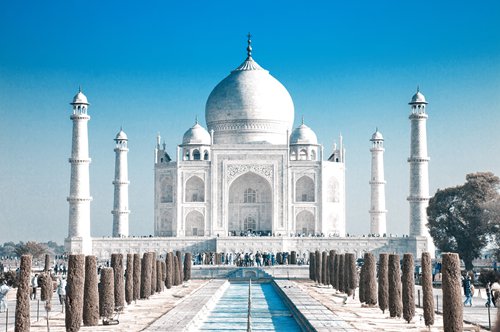Damage caused to the world-renowned Taj Mahal by a thunderstorm has become one of the hottest topics on Chinese social media and netizens are concerned about repair and prevention measures.
A heavy thunderstorm hit Agra, India, on Friday night causing damage to the Taj Mahal, the Times of India reported. A portion of marble and part of the sandstone railings behind the Taj Mahal’s main mausoleum were damaged after iron scaffolding fell on them.
The related hashtag has been viewed more than 190 million times on China’s Twitter-like Sina Weibo as of Tuesday afternoon. Most users expressed sadness about the damage to the famous masterpiece.
“The Taj Mahal is part of humanity’s cultural heritage so I hope it can be preserved well,” one netizen commented.
Another web user said that the accident “reminds me of the fire in Notre-Dame last year. I hope local authorities can take measures to prevent damage to these precious cultural relics.”
A Chinese expert suggested performing regular maintenance and overhaul of the lightning protection and fire control systems at historic buildings, especially in the thunderstorm season.
“The main part of the Taj Mahal is high so it is easy for it to be affected by thunderstorms,” Liu Zheng, a member of the China Cultural Relics Academy, told the Global Times on Tuesday. “The relic is mainly a stone structure, so it has less risk from fire after thunderstorms than timber-structure buildings.”
Beijing has also entered its thunderstorm season and has been hit twice in 10 days. For the city’s timber-structure historic buildings such as the Palace Museum, the weather is a big challenge.
Liu introduced the lightening protection for palaces in the Forbidden City such as the Hall of Supreme Harmony.
“Since it was built in the Ming Dynasty (1368-1644), the Hall of Supreme Harmony as the highest palace in the Forbidden City had been hit by thunderstorms dozens of times by the time of the Kangxi Emperor in the Qing Dynasty (1644-1911),” Liu said.
An iron chain was installed on the roof of the Hall of Supreme Harmony to “block the dragon” in the period of Kangxi and played a role as a lightning rod. Since then, the palace has never been struck by lightning, he added.
The Forbidden City is fully equipped with lightning rods and fire-control systems, decreasing the risk of thunderstorm damage and fire to a great extent.
“I visited the Taj Mahal last year and was stunned by its magnificence,” a Chinese tourist surnamed Zhao told the Global Times. “After the heart-breaking experience of the fire in Notre-Dame, I do not want to see any historic masterpiece ruined either by nature or by humans.”
Taj Mahal of India Photo: VCG



